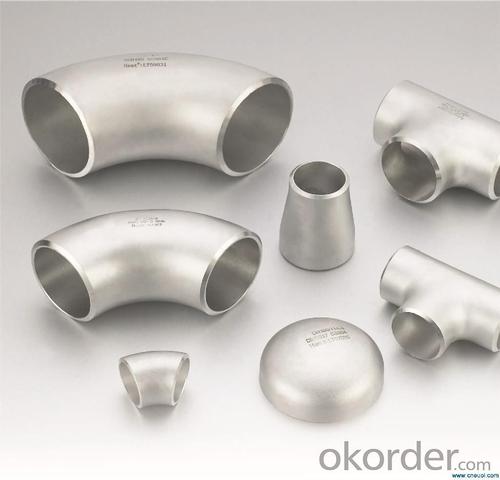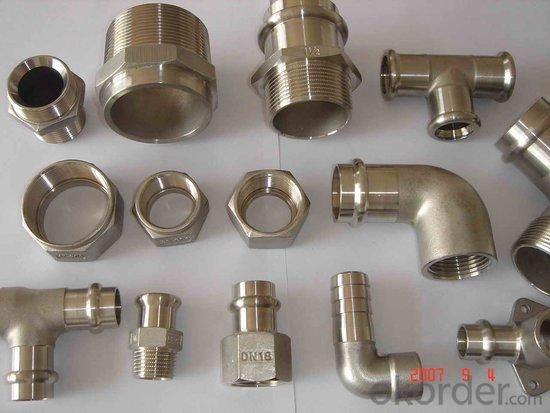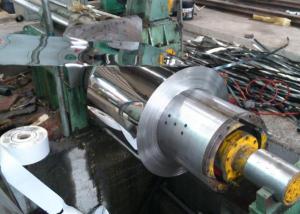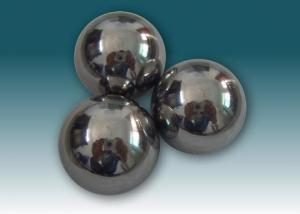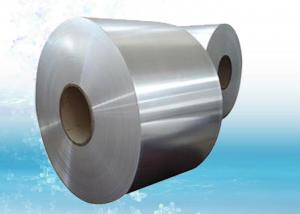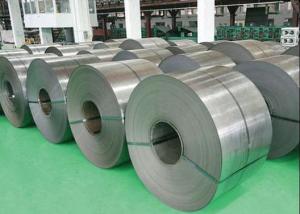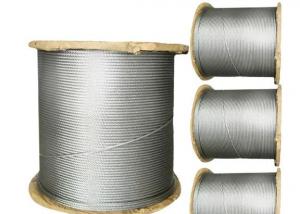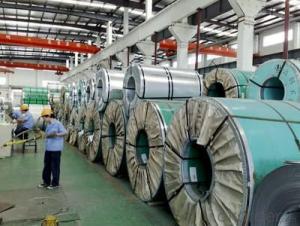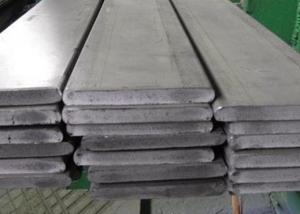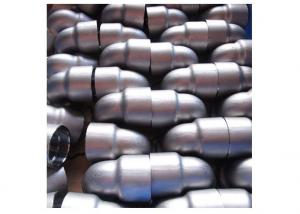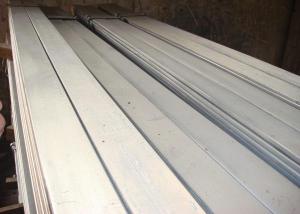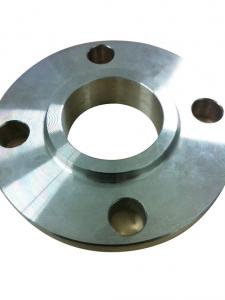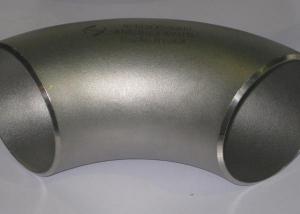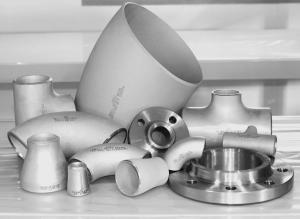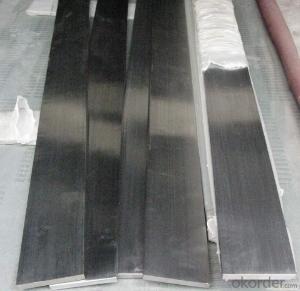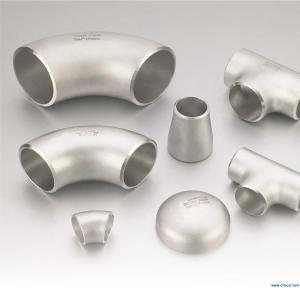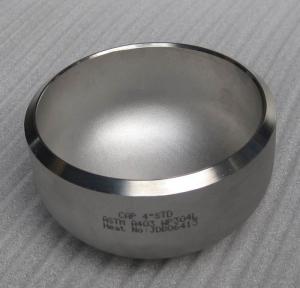Stainless Steel Fittings 304
- Loading Port:
- Shanghai Port or Others
- Payment Terms:
- TT or LC
- Min Order Qty:
- 1 pc m.t.
- Supply Capability:
- 1000 Tons Per Month m.t./month
OKorder Service Pledge
OKorder Financial Service
You Might Also Like
Stainless Steel Fittings 304
Applications Of Stainless Steel Fittings 304
1. Pipe and Tubes for petrochemical industry
2. Pharmaceutical industry
3. Food industry
4. Aviation and aerospace industry
5. Architectural decoration industry
General Information Of Stainless Steel Fittings 304
Type | BUTT-WELDING, FORGED/CASTING THREAD SOCKET-WELD. |
Item | 90° ELBOW ( LONG RADIUS / SHORT RADIUS ), EQUAL TEE,45° ELBOW ( LONG RADIUS / SHORT RADIUS ), REDUCING TEE, ROUND CAP, CONCENTRIC REDUCER, ECCENTRIC REDUCER, STUB END |
Stainless Steel Material | ASTM A403 WP304 / WP304L / WP316 / WP316L / 316 Ti / 321 / 310 / 347 / 904L |
Nickel Alloys Material | Grade: UNS 2200 (NICKEL 200), UNS 4400 (MONEL 400), UNS 8825 INCONEL (825 ), UNS 6600(INCONEL 600), UNS 6601 (INCONEL 601), UNS 6625 (INCONEL 625), UNS 10276 (HASTELLOY C 276), UNS 2201 (NICKEL 201), (ALLOY 20 / 20 CB 3) |
Alloy Steel Material | ASTM A234 WP1, WP5, WP9, WP11, WP22, WP91 |
Dimension | ANSI B16.9 / MSS SP- 43 / JIS B2313 |
Thickness | SCH5S / SCH10S / SCH40S / SCH80S / SCH 120S |
Size | 1/2" - 48" |
Method | SEAMLESS AND ERW |
Package Of Stainless Steel Fittings 304
Seaworthy packaging of export.
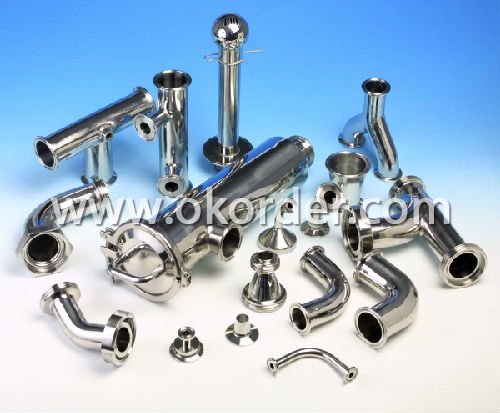
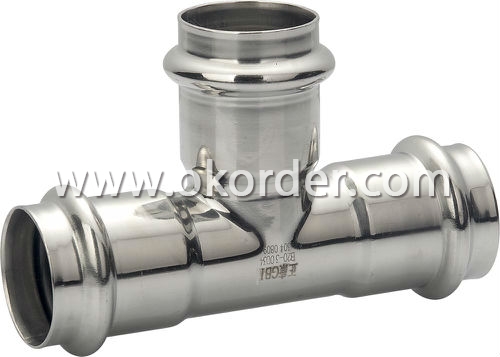
- Q: Are stainless steel flats suitable for industrial machinery?
- Yes, stainless steel flats are highly suitable for industrial machinery. Stainless steel is known for its exceptional strength, durability, and resistance to corrosion, making it an ideal material for industrial applications. The flat shape of stainless steel flats allows for easy fabrication and installation, making them versatile for various machinery components such as frames, supports, brackets, and panels. Stainless steel flats also offer excellent mechanical properties, including high tensile strength and resistance to impact, making them capable of withstanding heavy loads and harsh operating conditions commonly found in industrial environments. Additionally, stainless steel has a hygienic surface that is easy to clean, making it suitable for industries such as food processing or pharmaceuticals. Overall, stainless steel flats provide long-lasting performance, reliability, and safety, making them an excellent choice for industrial machinery.
- Q: What are the common tolerances for stainless steel flats?
- The tolerances for stainless steel flats may differ depending on the specific industry and application needs. However, various industries generally accept certain tolerances. Concerning thickness, the typical standard tolerance for stainless steel flats is approximately +/- 0.005 inches (0.13 mm). This means that the actual thickness of the flat can vary within this specified range. For width and length dimensions, the usual tolerance is around +/- 0.010 inches (0.25 mm). This allows for slight variation in the dimensions of the stainless steel flat, ensuring that it still meets the required specifications. In addition to these dimensions, there are specified tolerances for the surface finish of stainless steel flats. The common tolerance for surface roughness, expressed as Ra (arithmetical average), is typically about 32-63 microinches (0.8-1.6 micrometers). This ensures that the flat's surface is smooth and free from any significant imperfections. It is important to note that these tolerances can vary based on the specific stainless steel grade, manufacturing process, and intended use of the flat. Therefore, it is always recommended to consult the relevant industry standards or specifications to determine the precise tolerances required for a particular stainless steel flat.
- Q: What is the weight of a standard stainless steel flat?
- The dimensions and thickness of a standard stainless steel flat can cause variations in its weight. Nevertheless, a stainless steel flat of typical proportions, measuring 1 meter in length, 100 millimeters in width, and 10 millimeters in thickness, would approximately weigh 7.9 kilograms. It is crucial to mention that this weight estimation may slightly differ due to the specific alloy and tolerances of the stainless steel flat.
- Q: How do stainless steel flats resist corrosion in acidic environments?
- Stainless steel flats are highly resistant to corrosion in acidic environments due to the presence of chromium in their composition. Chromium forms a passive layer on the surface of stainless steel, which acts as a protective barrier against the corrosive effects of acids. This passive layer is formed when chromium reacts with oxygen in the air or water, creating a thin, invisible, and self-healing oxide film. The oxide film formed on stainless steel flats is stable and prevents further oxidation, thus preventing the metal from corroding. It acts as a shield, effectively blocking the diffusion of corrosive elements into the metal. Additionally, the high chromium content in stainless steel enhances its resistance to corrosion in acidic media. Moreover, stainless steel flats often contain other alloying elements like nickel and molybdenum, which further enhance their corrosion resistance. Nickel improves the stability of the passive layer, while molybdenum increases the resistance to pitting and crevice corrosion in acidic environments. The combination of these factors makes stainless steel flats an excellent choice for applications where they may come into contact with acids. They can withstand the corrosive effects of various acidic substances, such as sulfuric acid, hydrochloric acid, and acetic acid, without degrading or losing their structural integrity.
- Q: Are stainless steel flats suitable for high-temperature applications?
- Indeed, high-temperature applications are well-suited for stainless steel flats. Renowned for its exceptional heat resistance properties, stainless steel is a favored material for tasks involving elevated temperatures. Stainless steel flats can endure extreme heat without compromising their structural integrity or encountering substantial deformation. Moreover, stainless steel boasts low thermal expansion, ensuring minimal expansion or contraction in the face of drastic temperature fluctuations. This characteristic serves to uphold dimensional stability and prevent the occurrence of warping or cracking at high temperatures. Furthermore, stainless steel exhibits exceptional corrosion resistance, a critical attribute in high-temperature scenarios where other metals may undergo corrosion or degradation. All in all, stainless steel flats present themselves as a dependable and robust choice for high-temperature environments.
- Q: Can stainless steel flats be used in construction?
- Yes, stainless steel flats can be used in construction. Stainless steel is a versatile and durable material that is commonly used in various construction applications. It offers excellent corrosion resistance, high strength, and aesthetic appeal, making it suitable for both structural and decorative purposes. Stainless steel flats can be used in the construction of buildings, bridges, and infrastructure projects. They are often used in the fabrication of structural components such as beams, columns, and supports, as well as in cladding, roofing, and interior design elements. Stainless steel flats provide long-term durability, low maintenance requirements, and can withstand extreme weather conditions, making them a reliable choice for construction projects.
- Q: Can stainless steel flats be hardened?
- Yes, stainless steel flats can be hardened by a process called heat treatment, specifically by subjecting them to high temperatures followed by rapid cooling, known as quenching. This process alters the internal structure of the stainless steel, making it harder and more durable.
- Q: Can stainless steel flats be used in food storage containers?
- Yes, stainless steel flats can be safely used in food storage containers. Stainless steel is non-reactive, durable, and resistant to corrosion, making it an excellent choice for storing food as it does not leach any harmful chemicals or flavors into the food. Additionally, stainless steel is easy to clean and maintain, making it a hygienic option for food storage.
- Q: Can stainless steel flats be used in the manufacturing of heat recovery systems?
- Yes, stainless steel flats can be used in the manufacturing of heat recovery systems. Stainless steel is a highly durable and corrosion-resistant material that can withstand high temperatures, making it an ideal choice for heat recovery systems. Its properties, such as good thermal conductivity and strength, make stainless steel flats suitable for various components in heat recovery systems, including heat exchangers and piping.
- Q: What are the different types of edges available for stainless steel flats?
- Specific requirements and applications can be met by manufacturing stainless steel flats with various types of edges. Some commonly available edge types for stainless steel flats include: 1. Standard Mill Edge: During the manufacturing process, a slightly rounded or curved edge is produced, which is suitable for general applications. 2. Slit Edge: Slitting the stainless steel coil or sheet results in a straight edge with a slight burr that can be removed during subsequent processing or fabrication. 3. Smooth Deburred Edge: By removing the burr from the slit edge, a smooth and sharp edge is achieved, making it appropriate for safety-conscious applications. 4. Rounded Edge: Stainless steel flats can be manufactured with a rounded edge for a more aesthetically pleasing finish, often seen in architectural and decorative applications. 5. Beveled Edge: Cutting or grinding the edge at an angle, typically 45 degrees, creates a beveled edge, commonly used in precise fitting or seamless joint applications like construction or machinery manufacturing. 6. Sharp Square Edge: A straight and sharp edge without any rounding or beveling, commonly used in industrial applications where a clean and precise edge is required for blades, tools, or machinery parts. It's important to note that the availability of different edge types may vary among manufacturers or suppliers of stainless steel flats. The choice of edge type should be based on the specific requirements of the application, considering functionality, aesthetics, safety, and ease of fabrication.
1. Manufacturer Overview
| Location | Anhui,China |
| Year Established | 2003 |
| Annual Output Value | Above US$16 Million |
| Main Markets | South Korea;Japan; Europe;ASEAN;India |
| Company Certifications | ISO 9001:2000; |
2. Manufacturer Certificates
| a) Certification Name | |
| Range | |
| Reference | |
| Validity Period |
3. Manufacturer Capability
| a) Trade Capacity | |
| Nearest Port | Shanghai |
| Export Percentage | 70% |
| No.of Employees in Trade Department | 160 People |
| Language Spoken: | English;Chinese;Japanese;Korea |
| b) Factory Information | |
| Factory Size: | Above 300,000 square meters |
| No. of Production Lines | Above 10 |
| Contract Manufacturing | OEM Service Offered;Design Service Offered |
| Product Price Range | Average |
Send your message to us
Stainless Steel Fittings 304
- Loading Port:
- Shanghai Port or Others
- Payment Terms:
- TT or LC
- Min Order Qty:
- 1 pc m.t.
- Supply Capability:
- 1000 Tons Per Month m.t./month
OKorder Service Pledge
OKorder Financial Service
Similar products
Hot products
Hot Searches
Related keywords





